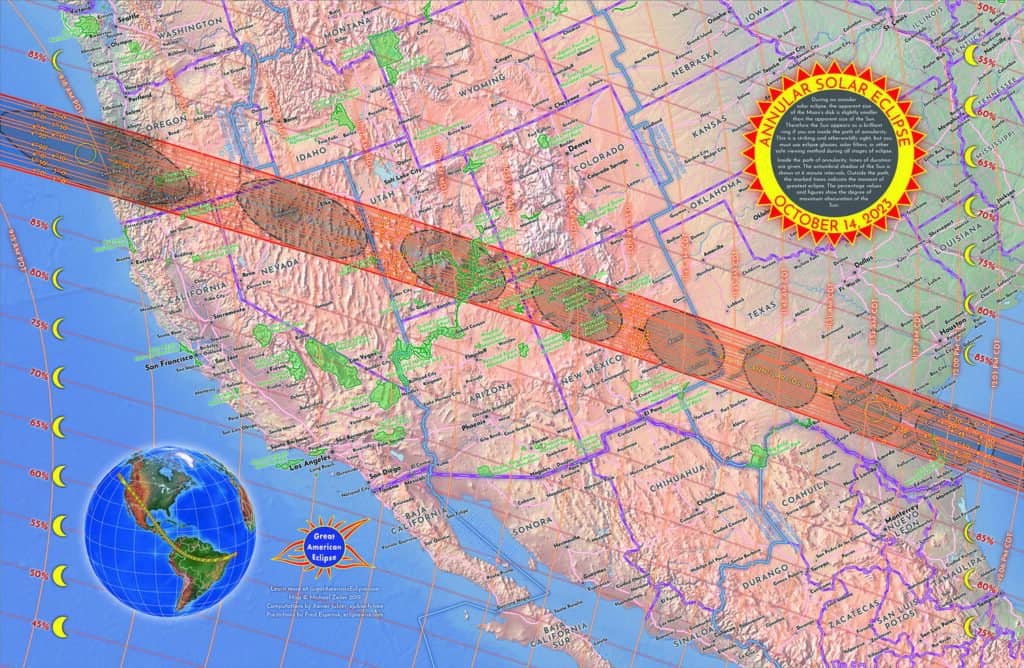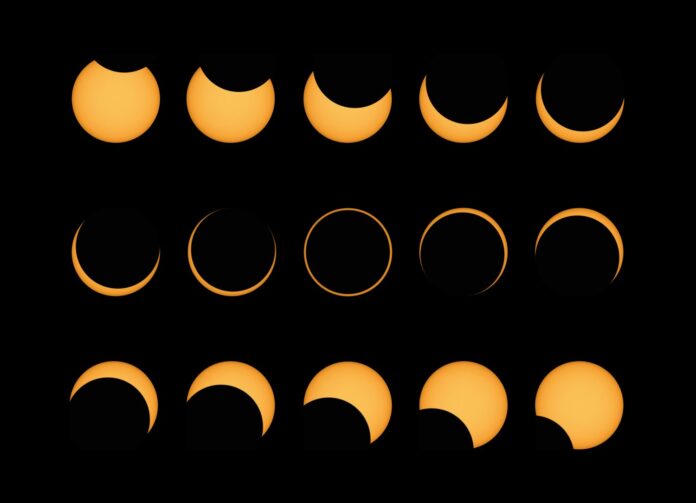On Saturday, Oct. 14, an annular solar eclipse will be visible from the Verde Valley beginning at 8:10 a.m. and ending at 11 a.m.
An annular solar eclipse occurs when the moon moves between the sun and the earth with the moon at sufficient distance from the earth that it appears slightly smaller than the sun. This alignment results in the formation of a “ring of fire” encircling the sun in the sky. The eclipse is expected to reach its maximum at 9:31 a.m. with 88.9% coverage.
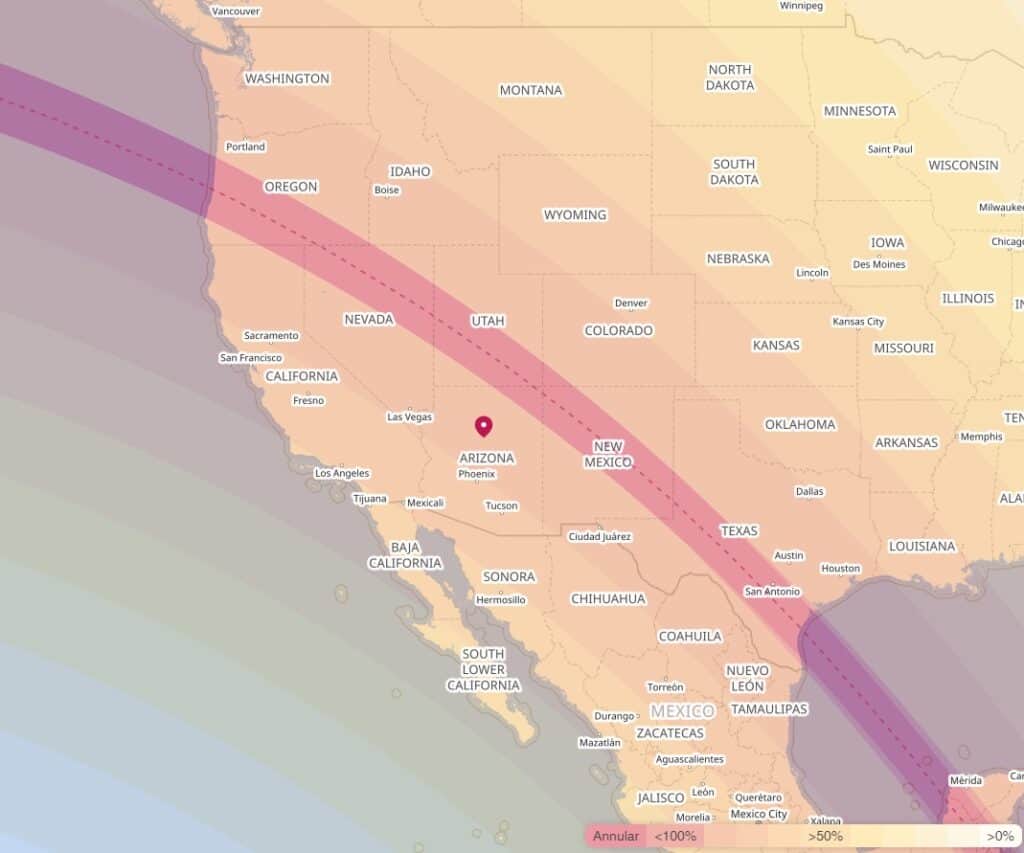
Verde Valley residents can pick up free solar viewing glasses at the Sedona Public Library or the Village of Oak Creek library on Friday, Oct. 13, during normal operating hours, or during the Wings & Wheels event at the SedonaAirport on Saturday, Oct. 14, from 9 a.m. until supplies run out.
“The day of the event, Oct. 14, from 9 to 11 a.m., we are welcoming all community residents to view the solar eclipse here” at the Sedona Public Library, SPL assistant librarian Tasha Spuches said. “The most exciting part is we have Sirius Lookers of Sedona coming. They’re going to have a table set up with different instruments so that we can view the sun safely. One of them [a hydrogen-alpha telescope] will allow you to see sunbursts, which I think is super cool. They’ll be on hand to answer anybody’s questions about what’s happening.”
During the week leading up to the event, SPL’s children’s room will be offering a free take-home craft project that patrons can pick up to get ready for the excitement and learn about the power of the sun.
“[It’s] our sunprint kits,” Spuches said. “It’s a type of paper that allows anyone to go out in nature, find leaves, rocks [or] anything with pretty shapes. They lay the items on the paper and leave it out in the sun and the sun will cause it to remove the color from where objects are. So they create art with the power of the Sun.”
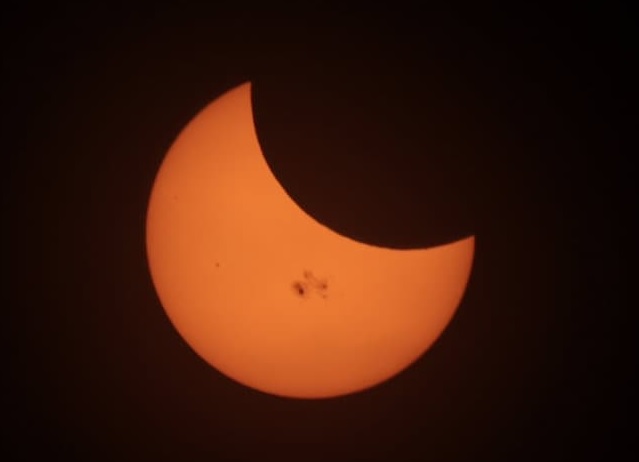
On the day of the eclipse, library storyteller Miss Marsha will be doing a craft for preschoolers through third-graders.
“It’s a paper plate craft [where they] create an image of the earth, the sun and the moon. They’ll be able to recreate the eclipse by moving the images that they make,” Spuches said.
“We’ll have a couple of club members out at that beautiful patio [that] they just finished,” Sirius Lookers of Sedona founder and president Dennis Young said. “The whole duration goes for three and a half hours and I don’t want to put any pressure on people to stay that long … They’ll have some binoculars, some small telescopes, we’ll have a hydrogen-alpha telescope to show the explosions coming off the sun.”
Young explained that he is excited about the upcoming eclipses because they coincide with increased solar magnetic activity. Current activity is at a 20-year high and peak activity may occur within the next year.
“[Solar magnetic activity] can do chaos to our satellite imaging and power grids,” Young said. “It’s been very active. That means when the eclipse happens in six months, it could [see] some major explosions coming out the edge of the sun, which I’m really excited about looking at up close under high power through a telescope.”
“The Sirius Lookers Astronomy Club meets regularly at the library in the Quiet Study, on the third Wednesday of every month at 5 p.m., and they welcome all astronomy enthusiasts, new, amateur or seasoned,” the club said in a press release.
Those interested in seeing a total eclipse should make plans for Monday, April 8, when another total eclipse will be visible from Texas to Maine.
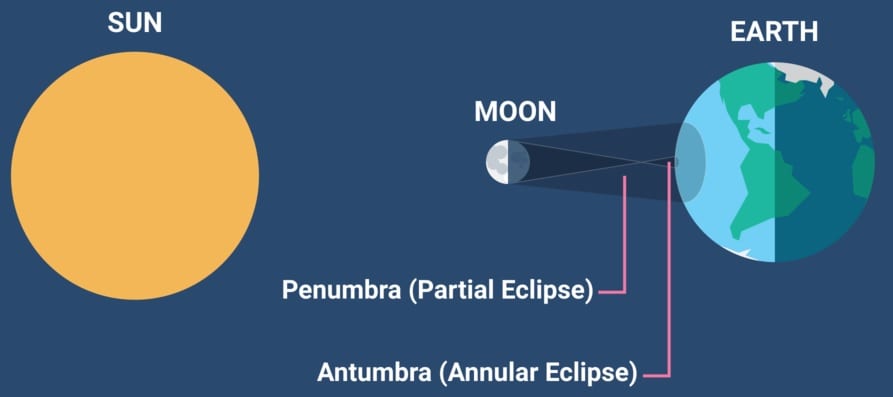
On Oct. 14, the annular or “ring of fire” solar eclipse will cross North, Central and South America, visible for millions of people in the Western Hemisphere.
During an annular eclipse, it is never safe to look directly at the Sun without specialized eye protection designed for solar viewing.
Safety Guidelines:
The Sun is never completely blocked by the Moon during an annular solar eclipse. Therefore, during an annular eclipse, it is never safe to look directly at the Sun without specialized eye protection designed for solar viewing.
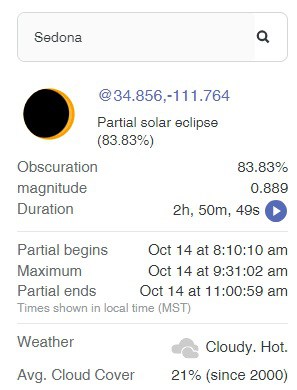
Viewing any part of the bright Sun through a camera lens, binoculars, or a telescope without a special-purpose solar filter secured over the front of the optics will instantly cause severe eye injury.
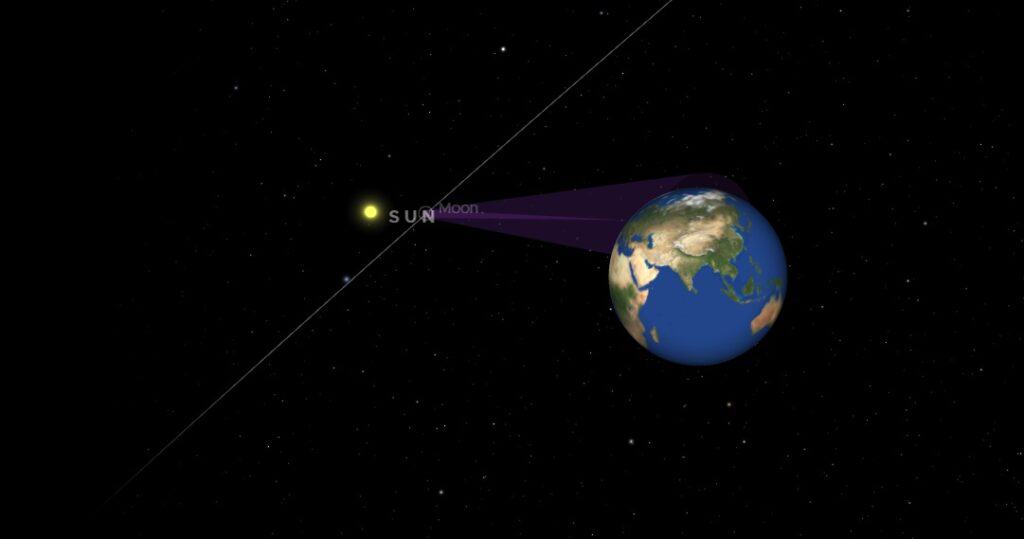

When watching an annular solar eclipse directly with your eyes, you must look through safe solar viewing glasses, aka “eclipse glasses,” or a safe handheld solar viewer at all times. Eclipse glasses are NOT regular sunglasses; regular sunglasses, no matter how dark, are not safe for viewing the Sun. Safe solar viewers are thousands of times darker and ought to comply with the ISO 12312-2 international standard.
NASA does not approve any particular brand of solar viewers.
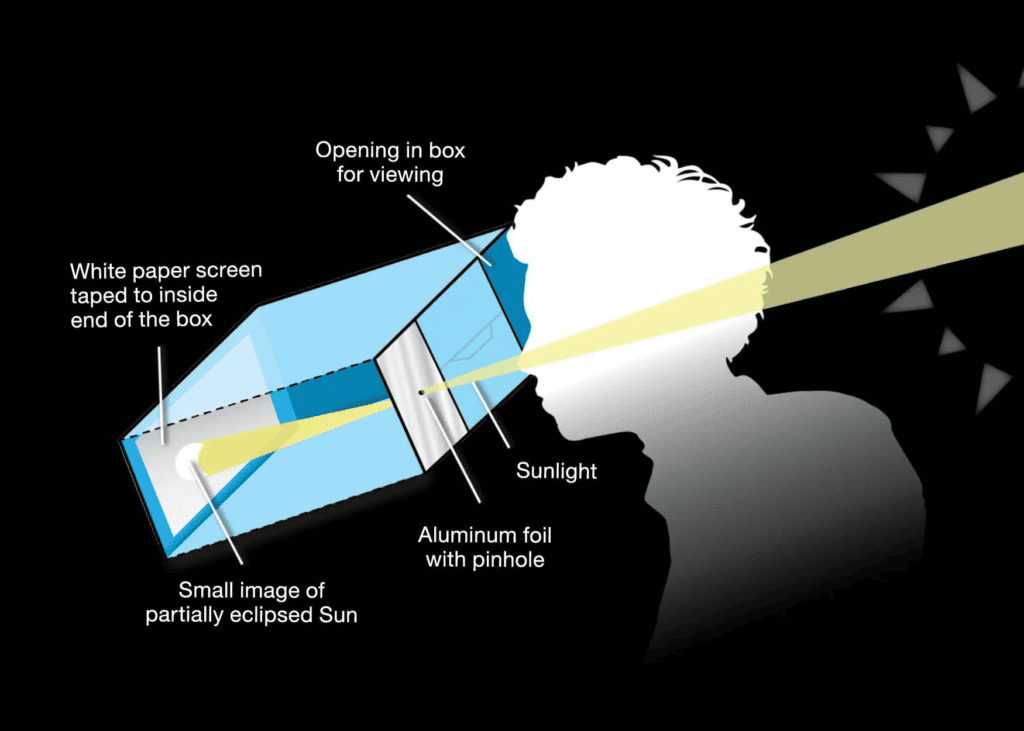
Image courtesy of NASA
Always inspect your eclipse glasses or handheld viewer before use; if torn, scratched, or otherwise damaged, discard the device. Always supervise children using solar viewers.
Do not look at the Sun through a camera lens, telescope, binoculars, or any other optical device while wearing eclipse glasses or using a handheld solar viewer — the concentrated solar rays will burn through the filter and cause serious eye injury.
